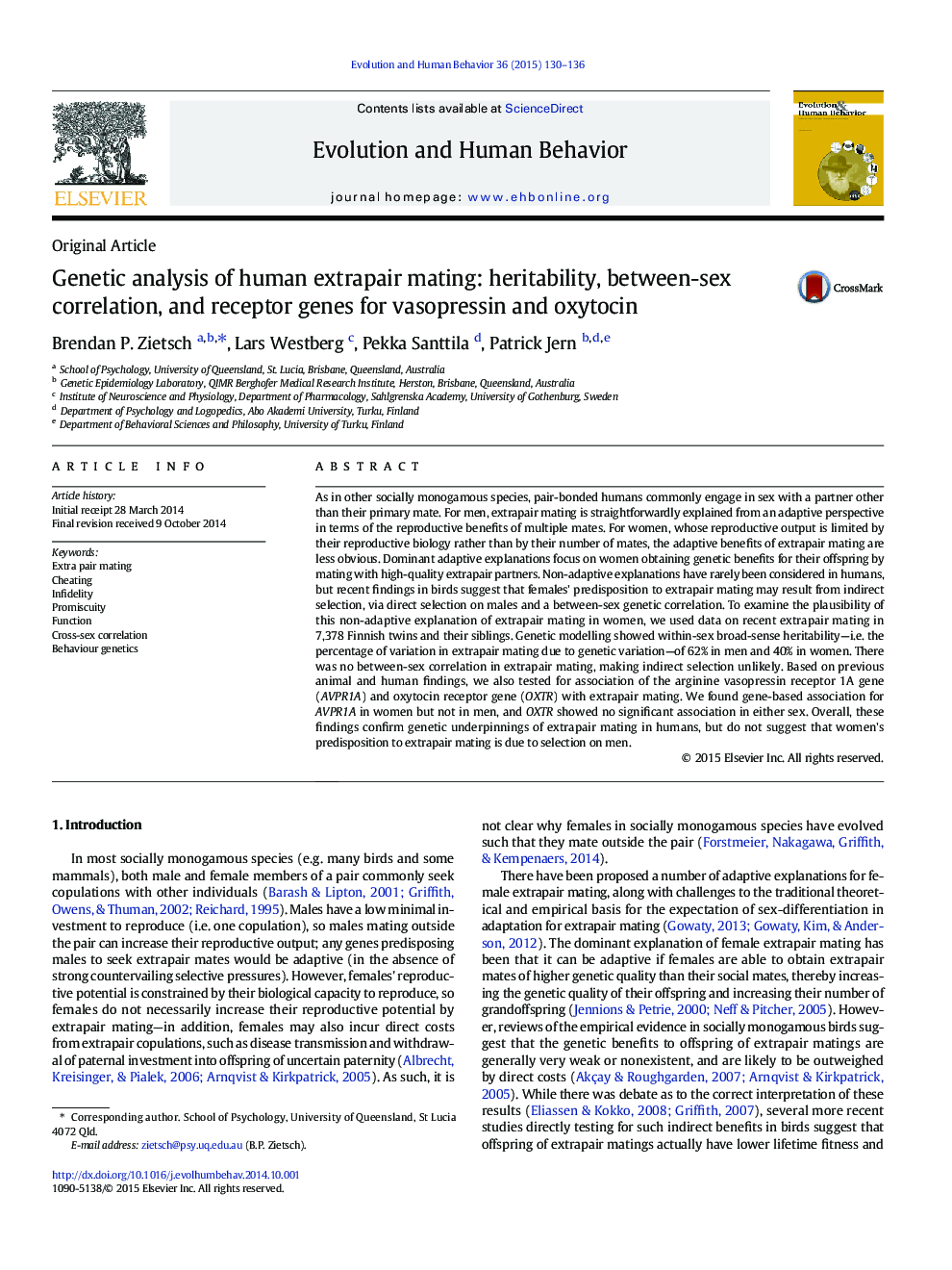| کد مقاله | کد نشریه | سال انتشار | مقاله انگلیسی | نسخه تمام متن |
|---|---|---|---|---|
| 10463994 | 925446 | 2015 | 7 صفحه PDF | دانلود رایگان |
عنوان انگلیسی مقاله ISI
Genetic analysis of human extrapair mating: heritability, between-sex correlation, and receptor genes for vasopressin and oxytocin
ترجمه فارسی عنوان
تجزیه و تحلیل ژنتیکی از جفتگیری اضطراری انسان: وراثت پذیری، همبستگی بین جنسیتی و ژن گیرنده برای وازوپرسین و اکسیتوسین
دانلود مقاله + سفارش ترجمه
دانلود مقاله ISI انگلیسی
رایگان برای ایرانیان
کلمات کلیدی
جفت جفت اضافی تقلب کردن، وفاداری، شتابزدگی، تابع، همبستگی متقابل جنسی، ژنتیک رفتاری،
موضوعات مرتبط
علوم زیستی و بیوفناوری
علوم کشاورزی و بیولوژیک
بوم شناسی، تکامل، رفتار و سامانه شناسی
چکیده انگلیسی
As in other socially monogamous species, pair-bonded humans commonly engage in sex with a partner other than their primary mate. For men, extrapair mating is straightforwardly explained from an adaptive perspective in terms of the reproductive benefits of multiple mates. For women, whose reproductive output is limited by their reproductive biology rather than by their number of mates, the adaptive benefits of extrapair mating are less obvious. Dominant adaptive explanations focus on women obtaining genetic benefits for their offspring by mating with high-quality extrapair partners. Non-adaptive explanations have rarely been considered in humans, but recent findings in birds suggest that females' predisposition to extrapair mating may result from indirect selection, via direct selection on males and a between-sex genetic correlation. To examine the plausibility of this non-adaptive explanation of extrapair mating in women, we used data on recent extrapair mating in 7,378 Finnish twins and their siblings. Genetic modelling showed within-sex broad-sense heritability-i.e. the percentage of variation in extrapair mating due to genetic variation-of 62% in men and 40% in women. There was no between-sex correlation in extrapair mating, making indirect selection unlikely. Based on previous animal and human findings, we also tested for association of the arginine vasopressin receptor 1A gene (AVPR1A) and oxytocin receptor gene (OXTR) with extrapair mating. We found gene-based association for AVPR1A in women but not in men, and OXTR showed no significant association in either sex. Overall, these findings confirm genetic underpinnings of extrapair mating in humans, but do not suggest that women's predisposition to extrapair mating is due to selection on men.
ناشر
Database: Elsevier - ScienceDirect (ساینس دایرکت)
Journal: Evolution and Human Behavior - Volume 36, Issue 2, March 2015, Pages 130-136
Journal: Evolution and Human Behavior - Volume 36, Issue 2, March 2015, Pages 130-136
نویسندگان
Brendan P. Zietsch, Lars Westberg, Pekka Santtila, Patrick Jern,
